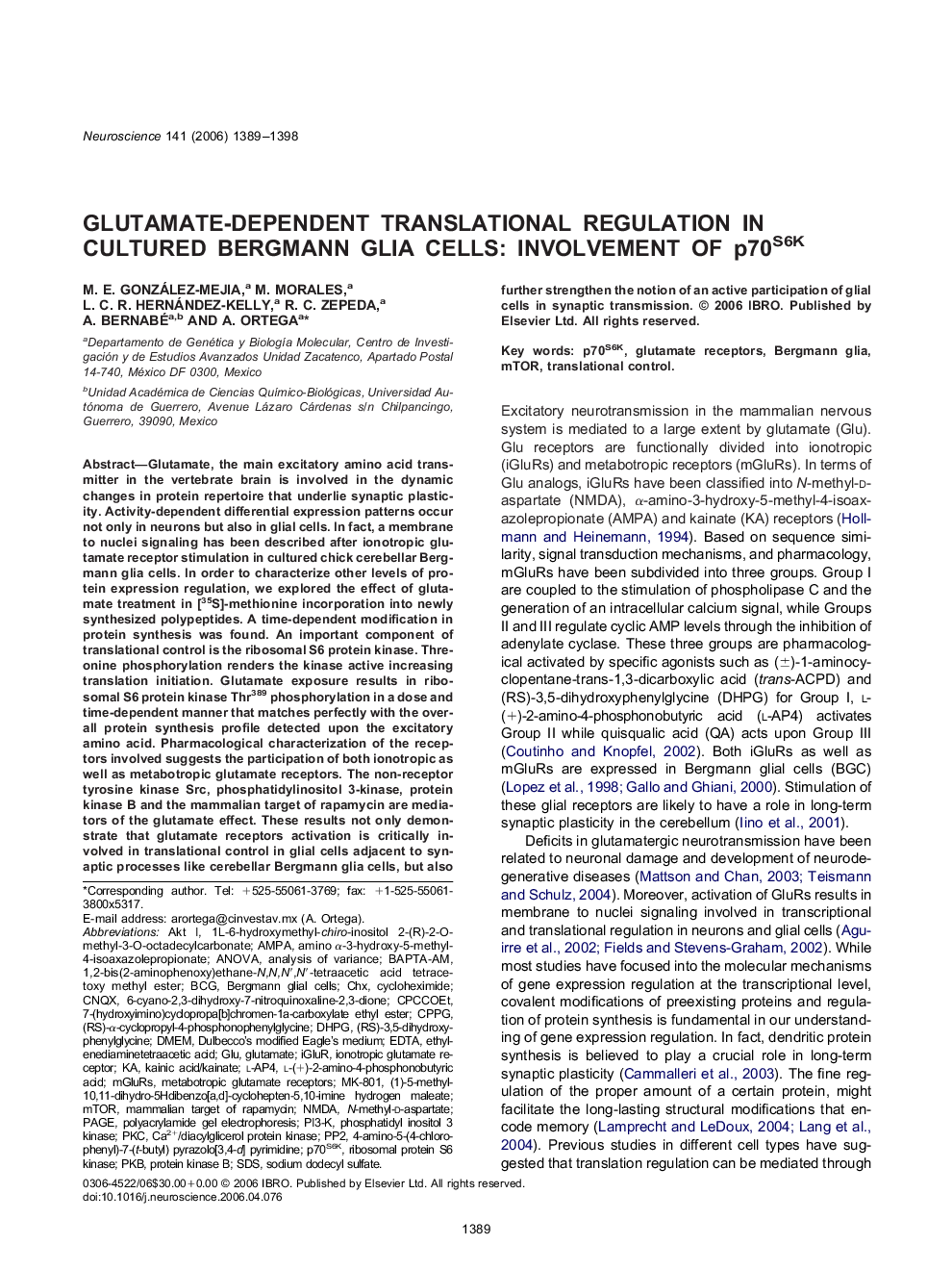| Article ID | Journal | Published Year | Pages | File Type |
|---|---|---|---|---|
| 4342545 | Neuroscience | 2006 | 10 Pages |
Abstract
Glutamate, the main excitatory amino acid transmitter in the vertebrate brain is involved in the dynamic changes in protein repertoire that underlie synaptic plasticity. Activity-dependent differential expression patterns occur not only in neurons but also in glial cells. In fact, a membrane to nuclei signaling has been described after ionotropic glutamate receptor stimulation in cultured chick cerebellar Bergmann glia cells. In order to characterize other levels of protein expression regulation, we explored the effect of glutamate treatment in [35S]-methionine incorporation into newly synthesized polypeptides. A time-dependent modification in protein synthesis was found. An important component of translational control is the ribosomal S6 protein kinase. Threonine phosphorylation renders the kinase active increasing translation initiation. Glutamate exposure results in ribosomal S6 protein kinase Thr389 phosphorylation in a dose and time-dependent manner that matches perfectly with the overall protein synthesis profile detected upon the excitatory amino acid. Pharmacological characterization of the receptors involved suggests the participation of both ionotropic as well as metabotropic glutamate receptors. The non-receptor tyrosine kinase Src, phosphatidylinositol 3-kinase, protein kinase B and the mammalian target of rapamycin are mediators of the glutamate effect. These results not only demonstrate that glutamate receptors activation is critically involved in translational control in glial cells adjacent to synaptic processes like cerebellar Bergmann glia cells, but also further strengthen the notion of an active participation of glial cells in synaptic transmission.
Keywords
MK-801(RS)-α-cyclopropyl-4-phosphonophenylglycineCPCCOEtCPPGl-AP4PP2PKBmGluRsCHXPI3-KPKC(RS)-3,5-dihydroxyphenylglycineN-methyl-d-aspartateNMDAp70S6KDHPGDMEMAMPAPAGESDSBCGmTORiGluRl-(+)-2-amino-4-phosphonobutyric acidEDTAEthylenediaminetetraacetic acidpolyacrylamide gel electrophoresisBergmann gliaBAPTA-AManalysis of varianceANOVAsodium dodecyl sulfateCNQXcycloheximidephosphatidyl inositol 3 kinaseDulbecco’s modified eagle’s mediummammalian target of rapamycinribosomal protein S6 kinaseprotein kinase BTranslational controlGluglutamateMetabotropic glutamate receptorsGlutamate receptorsionotropic glutamate receptor
Related Topics
Life Sciences
Neuroscience
Neuroscience (General)
Authors
M.E. González-Mejia, M. Morales, L.C.R. Hernández-Kelly, R.C. Zepeda, A. Bernabé, A. Ortega,
